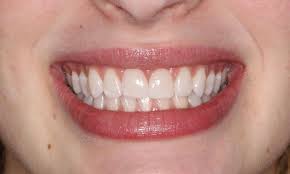Crooked nose surgery, also known as rhinoplasty or septoplasty, is a surgical procedure that corrects the shape and/or function of the nose. It can be performed for cosmetic reasons, to improve the appearance of a crooked or misshapen nose, or for medical reasons, to correct breathing difficulties caused by a deviated septum.
In this article, we will discuss the process of crooked nose surgery in detail, including who may benefit from it, what to expect before and after the procedure, and potential risks and complications.
Anesthesia
Before the procedure begins, the patient will be given anesthesia. This is to ensure they are comfortable and do not experience any pain during the surgery. The type of anesthesia used will depend on the complexity of the surgery and the patient’s preferences.
It may include local anesthesia, where only the nose area is numbed, or general anesthesia, which puts the patient to sleep for the duration of the procedure. The surgeon will discuss the best option for each individual case.
Incisions
These incisions allow access to the underlying bones and cartilage that make up the structure of the nose. The type and location of these incisions will depend on whether an open or closed rhinoplasty procedure is being performed.
In open rhinoplasty, a small incision is also made across the columella (the strip of tissue between the nostrils). This provides better visibility and access for more complex procedures. Closed rhinoplasty involves only internal incisions. It does not require an external one. Consider rhinoplasty at Refine Facial Plastic Surgery to get the best results.
Reshaping
Once the incisions have been made, the surgeon will then reshape and reposition the bones and cartilage as needed. This may involve the following:
- removing excess tissue
- straightening a deviated septum
- building up areas of the nose
In cases where the nose is deviated due to previous injury or trauma, additional grafts or implants may be used to help support and stabilize the nasal structure. The goal is to create a more symmetrical and aesthetically pleasing shape while also ensuring proper function of the nose.
Closing Incisions
Once the reshaping is complete, the incisions are then closed using dissolvable stitches or small sutures. These will usually be placed inside the nostrils so they are not visible on the outside of the nose.
In some cases, a splint may also be applied to help support and protect the newly shaped nose during healing. This splint will typically need to be worn for one to two weeks after surgery.
Recovery
The recovery period after crooked nose surgery is an important part of the process. It is essential to follow all post-operative instructions provided by the surgeon to ensure proper healing and minimize the risk of complications.
During the first few days after surgery, patients may experience some discomfort, swelling, and bruising around the nose and eyes. This is normal and can be managed with pain medication prescribed by the surgeon. Cold compresses can also help alleviate swelling.
Explore the Process of Crooked Nose Surgery
Crooked nose surgery can improve both the appearance and function of the nose, helping individuals feel more confident about their appearance and breathe more easily.
If you are interested in getting a nose job, consult with a qualified surgeon to determine if it is the right option for you. Overall, the process of crooked nose surgery can be life-changing for those who undergo it, providing both physical and emotional benefits.
If you want to explore the best topics, we’ve got you covered. Check out some of our other blogs today!






Add comment